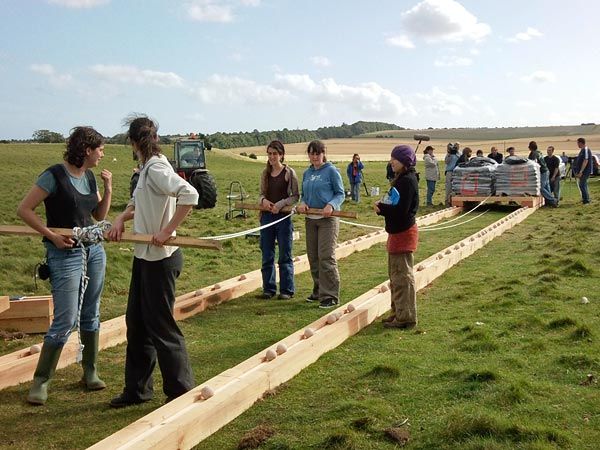Cross posted from The Stars Hollow Gazette
 Stonehenge is a massive prehistoric stone monument located just north of Salisbury, England, constructed anywhere from 3000 BC to 2000 BC. The surrounding circular earth bank and ditch, which constitute the earliest phase of the monument, have been dated to about 3100 BC. The site and its surroundings were added to the UNESCO’s list of World Heritage Sites in 1986.
Stonehenge is a massive prehistoric stone monument located just north of Salisbury, England, constructed anywhere from 3000 BC to 2000 BC. The surrounding circular earth bank and ditch, which constitute the earliest phase of the monument, have been dated to about 3100 BC. The site and its surroundings were added to the UNESCO’s list of World Heritage Sites in 1986.
The history of Stonehenge’s function and construction is subject to much debate since it was produced by a culture that left no written records that has led to multiple theories. Whatever religious, mystical or spiritual elements were central to Stonehenge, its design includes a celestial observatory function, which might have allowed prediction of eclipse, solstice, equinox and other celestial events important to a contemporary religion.
Two of the big questions about the construction of Stonehenge are: Where were these stones? How were these massive stones, weighing tons, moved from where they were quarried? Those questions have some answers, the first, official and the second, an interesting theory.
Some of the volcanic bluestones in the inner ring of Stonehenge officially match an outcrop in Wales that’s 160 miles (257 kilometers) from the world-famous site, geologists announced this week.
As it looks today, 5,000-year-old Stonehenge has an outer ring of 20- to 30-ton sandstone blocks and an inner ring and horseshoe of 3- to 5-ton volcanic bluestone blocks. [..]
So how did a primitive society move these gigantic stones from Wales to the plains of Salisbury? Easy. Balls. Or at least that is the lasted theory that archaeologists have presented:

U.K. archaeology students attempt to prove a rail-and-ball system could have moved Stonehenge stones.
Photograph courtesy University of Exeter
A previous theory suggested that the builders used wooden rollers-carved tree trunks laid side by side on a constructed hard surface. Another imagined huge wooden sleds atop greased wooden rails.
But critics say the rollers’ hard pathway would have left telltale gouges in the landscape, which have never been found. And the sled system, while plausible, would have required huge amounts of manpower-hundreds of men at a time to move one of the largest Stonehenge stones, according to a 1997 study.
Andrew Young, though, says Stonehenge’s slabs, may have been rolled over a series of balls lined up in grooved rails, according to a November 30 statement from Exeter University in the U.K., where Young is a doctoral student in biosciences.
Young first came up with the ball bearings idea when he noticed that carved stone balls were often found near Neolithic stone circles in Aberdeenshire, Scotland
Balls and a lot of “heart”

